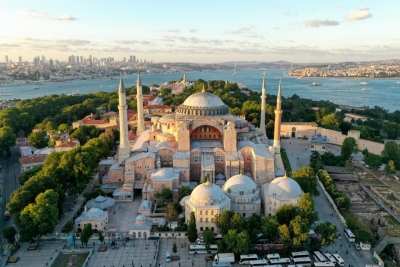
Built in the sixth century in Constantinople (present day Istanbul, Turkey) by the Byzantine emperor Justinian I, Hagia Sophia was once the largest cathedral in the world. The cathedral was converted into a mosque in 1453, when the Orroman took over Constantinople. It remained a mosque until 1935, when it was converted into a museum and opened its doors to the public, regardless of faiths.
However, in July 2020, Turkey’s top court annulled Hagia Sophia’s museum status leading the Turkish President Recep Tayyip Eradogan to turn it into a mosque once again.
An epitome of Byzantine architecture being converted into a mosque sparked criticism among people across the world. However, unfazed, the President ordered for prayers on July 24 and Quranic verses were being chanted inside the mosque. The paintings of Jesus and Mary that adorned the walls were covered up with sheets.
Turkey however did not stop with the Hagia Sophia. Recently, it announced the conversion of the Chora Museum, a former Byzantine church, into a mosque. The Chora museum shares a similar history with the Hagia Sophia – being built as a church by the Byzantines, converted into a mosque by the Ottoman, and a museum in 1945.
Byzantine Art
When the Roman empire split, the Eastern part of the empire came to be known as the Byzantine empire with Constantinople as its capital. The Byzantine empire was famous for its art, and architecture, particularly the use of mosaic art, where intricate pictures are made using pieces of stones. One can find many mosaic art pieces inside Hagia Sophia as well as the Chora museum and other Byzantine structures around Istanbul.
Picture Credit : Google

